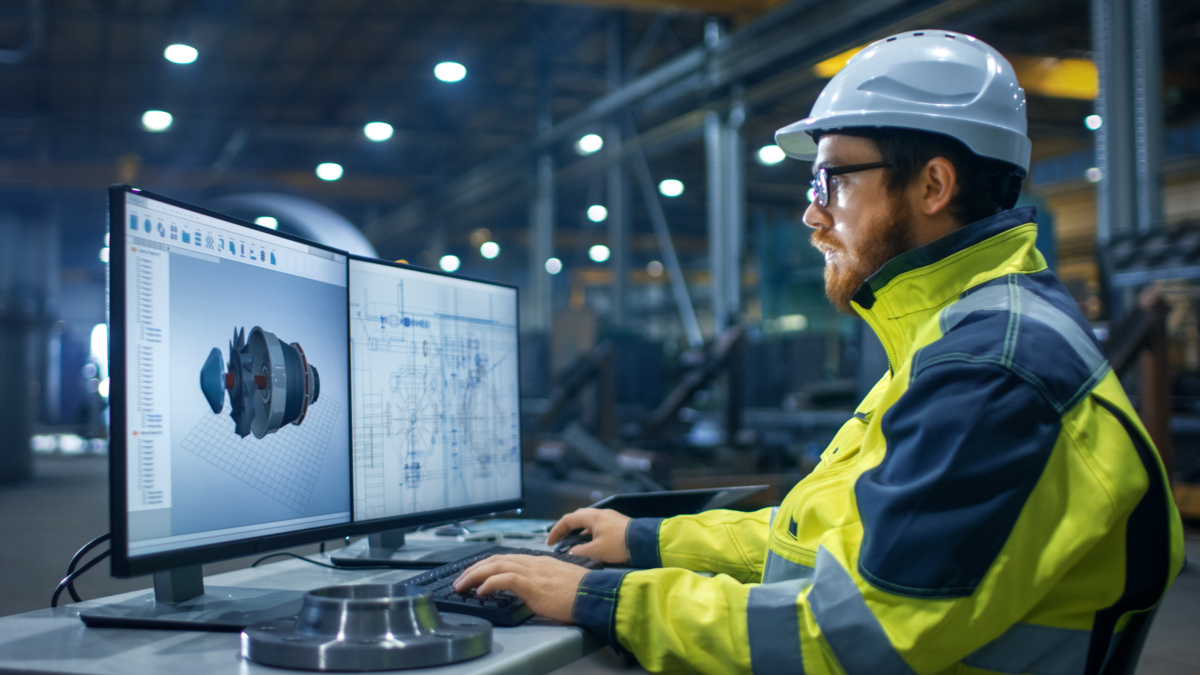Once, manufacturing revolved around the literal manufacture of products. But changes in the business landscape, from COVID and Brexit to advances in technology, have forced manufacturers to think beyond the industry name. This is exactly what we discuss in Season 2, episode six of ColumbusCast.
Henry Anson (Managing Director) and Stuart Biddle (Client Delivery Director) from premier industry publication The Manufacturer join me to analyse the state of manufacturing. How did we leave things in 2021 and what challenges and hurdles await manufacturers in 2022?
Looking back on 2021: Challenges and wins
The biggest challenges
- Improving business agility - manufacturers have had to change their approach not just operationally but also consider how best to engage and collaborate with other people. Business models needed to be adjusted so they could better respond to the changes in environments in which they’re now working. Agility is key to thriving in this unpredictable environment
- Managing workforce expectations - working from home is the norm for the majority of office staff. The initial challenge was ensuring productivity - for example, can all of your employees access the systems, tools and information they need to perform their day-to-day tasks? Now the challenge is getting staff back into the office (when the guidelines allow it)
- Encouraging data sharing - Stuart mentioned that the manufacturing industry has a tendency to silo data. For maximum process efficiency and internal productivity, this institutional knowledge needs to be easily accessed by those who actually need it
- Improving data analysis - the above then leads to another challenge, which I call ‘the wallpaper approach’. You ask for so much information that you struggle to see the things that really matter. Manufacturers must possess the skills and tools to know what they need to see to be able to do their job/task
- Handling supply chain fragility - This is something that manufacturers were already aware of and situations like Brexit and COVID have only highlighted it. And Henry confirms, saying that it’s “number one on the agenda for manufacturers”
The biggest wins

But despite the challenges of 2021, it wasn’t all doom and gloom for manufacturers. Here are some of the top wins for the industry:
- The speed of innovation - from adopting digital technology to adjusting business models (e.g. selling directly to the public rather than solely businesses), the rate at which some manufacturers adapted was very impressive
- Improved collaboration across the industry - the ventilator challenge, for example, showed how well the industry can work together
- A rise in public appreciation - this sector kept us fed, safe and ensured medicines came through despite the challenging conditions. The wider public is beginning to view manufacturing as an essential part of the UK community
Where is manufacturing heading?
As we move into 2022 and beyond, here are some of the areas manufacturers can certainly expect to see more of:
- Improved data analysis - this is as much of an opportunity as it is also a challenge. Manufacturers must realise that less is more when it comes to data. In other words, it’s knowing how to apply intelligence to data so you’re getting your people to come up with resolutions rather than focusing on just the gathering of it
- Interdepartmental collaboration - when people across departments and functions work together, productivity can soar. Stuart mentioned a certain Japanese manufacturer that rotated their key staff around departments regularly to get to know different areas of the business. So when they come together, they can work in a much more cooperative way
- A more sustainable future - this is now a main board agenda item for most, if not all, manufacturers. “It’s a genuine commitment to a carbon net zero future,” Henry tells us. There are things that need to be ironed out still, such as what to measure and how to measure it, but there is a commitment at board level to hit aggressive carbon net zero targets - some by 2030, others by 2050
Let’s focus on sustainability for a moment. Manufacturers themselves can be carbon net neutral - by adjusting and optimising processes. But can you be sure that your supply chain is sustainable? This is, as Stuart describes, “a fiercely complicated and difficult challenge” to overcome.
The solution? Consider applying basic lean principles with a sustainable lens - that can help you start your journey towards a more sustainable future.
Taking a high-level approach

Agility, process efficiency, cost-effectiveness - whatever it is that you want to improve, you should step back and decide what you as a business want to do. All before you start considering which technology and other techniques to apply.
Most importantly, you must make your business human centric. Focus on developing your employees and customers. How can you improve task efficiency and internal morale? What about your customer journey - are you adding value at every step?
Tune into our ColumbusCast episode to hear more of the above, plus:
- The ongoing impact of COVID on manufacturers, such as the potential divide between office and production line staff
- The need to focus on becoming more human centric
- What agility looks like and examples of manufacturers who succeeded
- More sustainability goals, including Microsoft’s aim to become water positive by 2030
Dig deeper into where the future of manufacturing is heading by reading our ultimate guide. We cover the industry’s evolution, key trends and tips to help businesses stay ahead. Read the resource by clicking the button below.

